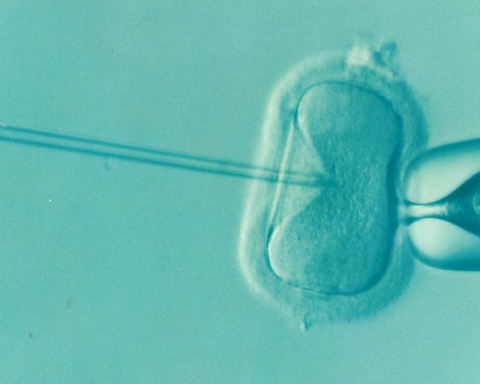Abstract
Different batches of mesoporous silica spheres with modified pore surface were prepared in single step chemical reaction with diverse surface morphologies and pore geometrics using pluronic F127- non-ionic surfactant, and 3-aminopropyltriethoxy silane (TEOS) and ammonia with and without modification. Ibuprofen was used as a model drug to characterize the different batches of prepared mesoporous silica comprehensively. Ibuprofen drug storage capacities as well rate of drug release profiles from the mesoporous silica were studied. Characteristic of each batch of prepared silica were studied by Ultraviolet Spectroscopy, X-ray Diffraction, Scanning Electron Microscopy, Surface area and Pore size Analyzer and Micromeritics Gemini analyzer. From the studies it was shown that drug loading and release profile of ibuprofen from the hollow mesoporous silica are related to the surface area and pore size of mesoporous silica. By modifying the pore size, surface area of the silica and surface topology these values of studied profiles can be changed and better results can be achieved. Although surface area of the mesoporous silica samples was found to be very small which affected loading and releasing property of ibuprofen, the results showed very encouraging indication of mesoporous silica technology application in drug delivery system.
Keywords: Mesoporous silica, Morphology, Modification, Drug release, Ibuprofen.
1. Introduction
In drug delivery systems new applications of mesoporous silica have been explored for the batter control of drug storage and release due to their high surface area, well defined pore structures and tenable pore surface (1-5). Most of the times amorphous mesoporous silica materials have been focused as a drug carrier since it is non-toxic, highly bio-compatible, adjustable pore diameter, low cost and the wall of the pores containing free silicon group with abundant Si-OH bonds which can take part in the reactions with appropriate drug functional groups(1,5). These materials acquire modifiable and uniformed pore sizes in the range of 1.5 to 10 nm (4). The potential applications of mesoporous silica in catalysis, separation, sensing and optical active materials make them very attractive and batter choice for drug carrier in the last decade (1).
Recent there has been increased interest in hollow mesoporous silica materials for utilization as drug carrier in the field of controlled drug release, to meet the need for prolonged and batter formulation of drug administration. Many research scientists have investigated the drug storage and releasing properties of mesoporous silica materials. The obtained results have indicated that the appropriate pore size and pore volume of hollow mesoporous silica spheres make them batter and ensured supports for the hosting and moreover releasing a large variety of drug molecules having specific therapeutic activity in the required area of the biological system. Investigations was also been done for the conventional silica materials which also lead some good results of storage and releasing drug molecules. However the drug carrier property of conventional silica materials was not been relatively high. They also showed some irregular bulk morphology which makes difficult for the scientist to design required drug delivery system. That’s why researchers worked to design a system which will recover these disadvantages. One effective strategy is synthesizing hollow mesoporous silica spheres with penetrating pore channels. Some of the research groups found that hollow mesoporous silica spheres are ideal carrier for drug storage and release (1-4, 7-9).
Research on hollow mesoporous silica materials has demonstrated that drug storage and release with hollow mesoporous silica is a good technology for controlled drug delivery system (10). Controlled release technology has become very important and effective in modern medication[/column] and pharmaceuticals (11). Controlled release formulation has many advantages over the conventional form of dosage forms: appropriately maintaining patient’s blood level for the required set of time, minimizing deleterious side effects, prolonging effectiveness, making a rapid increase of bioavailability at short intervals, protecting sensitive drug from the enzymatic and acidic degradation in the gastrointestinal tract and most importantly improving patient’s compliance (10-12).
It has been investigated that quite a few factors may convey enormous influence on the drug release profiles from hollow mesoporous silica carriers. One of the most significant aspects is the pore size of the mesoporous silica, or steric hindrance. It is by and large accepted that kinetics of the drug molecules is pronouncedly influenced by the pore size of the mesoporous silica. Some researchers reported that drug delivery rate gradually decreases with the reduction of the pore size (13, 14). The second key feature is the interaction between the mesoporous silica molecules and the drug to be stored, usually known as host-guest interaction. Here the property of the mesoporous silica spheres and the drug plays a vital role for a stable drug storage system. Munoz et al. originate that drug release from the host can be slow down because of the higher affinity between the drug and the mesoporous silica (15). The third feature is the aperture geometry of the mesoporous silica. It is establish that smaller pore openings of mesoporous silica with one-dimensional (1D) or three-dimensional (3D) “ cage-like” pore structure is of great benefit to slow down the drug release rate. Different morphologies for mesoporous silica can be achieved by using templating method or by the phase transformation approach. This usually involves the size and shape of the mesoporous silica in the micron scale. It gives the scope for the mesoporous silica to show rich morphological behaviour. The main reasons for showing such performance are:
- Silicate ions indicate as a counter ions forming soft hexagonal liquid crystalline phase.
- An affluent arrangement of the surfactant system can be rationalized to form various types of mesoporous structures.
- By changing the composition of the reaction system or the conditions the morphology of the mesoporous structure also change.
- The rate of the silica condensation reaction is also controllable at the later stage of the reaction.
- Self organization and the Siloxane bond formation progression can also independently control.
In the end, the pH of the dissolution media could affect the drug delivery profiles as well (14, 16, and 17).
Ibuprofen is one of the eminent non-steroidal anti-inflammatory drugs which is frequently using for the treatment of inflammation, analgesic or rheumatism and this drug furthermore contains one carboxylic acid group that makes the strong bonding with many functional groups via acid-base reaction (1, 18 and 19). This drug has a short biological half-life which makes the drug strongest contestant for the sustained or controlled release drug delivery system. Therefore, preference was given to ibuprofen as a model drug for the sustained/controlled release system (20). It also shows good pharmacological activity and the appropriate particle size (1.0 x 0.6 nm) of the drug ensures its straightforward diffusion into or out of the mesoporous channels of as prepared hollow mesoporous silica spheres. Although study with some other drugs like- vancomycin, gentamycin, cisplatin, aspirin, captopril and naproxen was done for batter drug storage and releasing property by other research groups (14, 19). Download full paper 816 KB.





